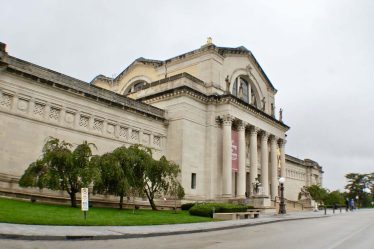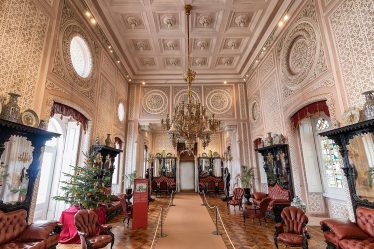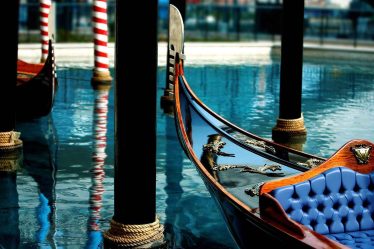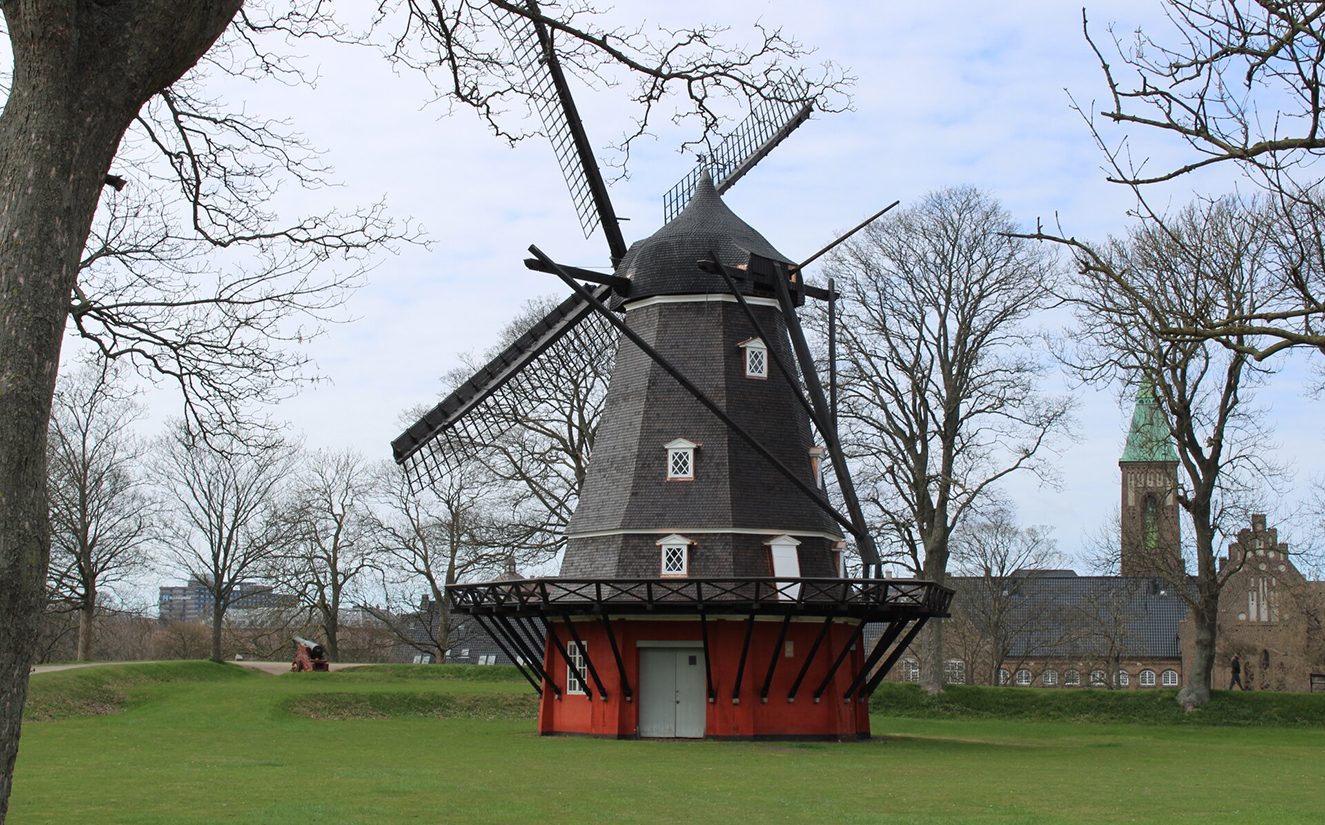
Copenhagen, often celebrated as the “happiest city in the Nordics,” is a captivating blend of historical depth and modern vibrancy. I found myself irresistibly drawn to its unique charm and endless inspiration. Let me take you on a journey through Copenhagen’s enchanting attractions, and discover why this city holds such a special place in the hearts of those who visit.
1. Kastellet: A Perfect Union of History and Nature
One cannot explore Copenhagen without visiting Kastellet, a well-preserved star-shaped fortress built in the 17th century. This site is not merely a military relic but a serene park where locals and tourists alike stroll and unwind.
The first time I stepped into Kastellet, I was immediately enveloped by a profound sense of history. The contrast between the red-brick buildings and the lush green lawns was striking, offering a peaceful retreat amidst the city’s hustle. Walking along the ramparts, you’re treated to panoramic views of Copenhagen’s skyline, a sight that marries the past with the present. Kastellet is more than just a historical site; it’s a sanctuary where the soul finds solace in the embrace of nature.
2. Nyboder and Its Yellow Houses: A Walk Through a Historical Canvas
For history buffs, Nyboder is a dream come true. This historic district, with its iconic rows of yellow houses, was originally built in the 17th century to house naval officers and their families.
Wandering through Nyboder, I felt as though I had stepped into a living painting. Each house tells a story, each cobblestone whispers the tales of bygone eras. The sunlight casts a golden hue on the yellow facades, creating a warm and inviting atmosphere. Unlike more bustling tourist spots, Nyboder offers a quiet, reflective experience, a chance to connect with the city’s storied past. It’s not just a place to visit, but a place to feel the heartbeat of history.
3. The Little Mermaid: A Symbol of Danish Fairy Tales
No visit to Copenhagen is complete without seeing The Little Mermaid, a symbol immortalized by Hans Christian Andersen. Perched gracefully on a rock by the sea, this small statue carries the weight of Denmark’s rich literary tradition.
Despite hearing about the statue’s modest size, standing before her filled me with a sense of quiet reverence. The Little Mermaid may be petite, but her cultural significance is immense. Her melancholic gaze towards the horizon speaks volumes, evoking emotions that transcend the simple bronze form. For both tourists and locals, she is a poignant reminder of the power of storytelling and the enduring magic of fairy tales.
4. Torvehallerne KBH: A Culinary Wonderland
If you’re a food lover, Torvehallerne KBH is a paradise you’ll never want to leave. This vibrant market, with over 60 stalls, offers everything from fresh produce to international delicacies.
The moment I walked into Torvehallerne KBH, I was engulfed in a sensory feast. The air was filled with the aromas of freshly baked bread, sizzling meats, and fragrant spices. Whether indulging in traditional Danish smørrebrød or sampling treats from around the world, every bite was a delight. But Torvehallerne KBH is more than just a market; it’s a place where the essence of Copenhagen’s culinary culture comes alive. It’s a feast not just for the stomach, but for the soul.
5. Nyhavn: The Colorful Heart of Copenhagen
Nyhavn, with its vibrant facades and historic ships, is perhaps Copenhagen’s most iconic image. This picturesque harbor in the heart of the city is as colorful in its history as it is in its appearance.
At sunset, Nyhavn is nothing short of magical. The buildings, painted in every shade imaginable, glow warmly under the golden light, while the gently rocking boats add a rhythmic calm to the scene. I loved finding a cozy café by the water, sipping coffee as I soaked in the vibrant atmosphere. Nyhavn is more than just a pretty postcard—it’s a place where the city’s lively spirit and rich history converge in a perfect harmony of sights, sounds, and flavors.
6. Christiansborg Palace: Where History Meets Modernity
Christiansborg Palace, located on the small island of Slotsholmen in the heart of Copenhagen, is one of the most historically and politically significant buildings in Denmark. This grand structure, with its imposing facade and towering spires, has played a central role in Danish history for over 800 years, serving as the epicenter of both royal and governmental power. The palace as we see it today is a fascinating blend of medieval architecture, baroque grandeur, and modern functionality, embodying the evolution of Denmark from a monarchy to a constitutional state.
A Journey Through History
The history of Christiansborg Palace is a tapestry woven with stories of power, resilience, and transformation. Originally built in the 12th century as a medieval fortress, Christiansborg was intended to serve as a stronghold for the Danish monarchy. Over the centuries, the palace has been rebuilt several times due to devastating fires, each reconstruction reflecting the architectural style and political climate of the time.
Walking through the palace, one cannot help but feel the weight of its storied past. The richly decorated rooms and halls are a testament to the opulence of Danish royalty, with each space meticulously designed to impress and convey power. The Throne Room, with its gilded decorations and grand chandeliers, is particularly striking. It is here that foreign ambassadors are received by the Queen, and it’s also the setting for the annual New Year’s levee—a tradition steeped in protocol and pageantry.
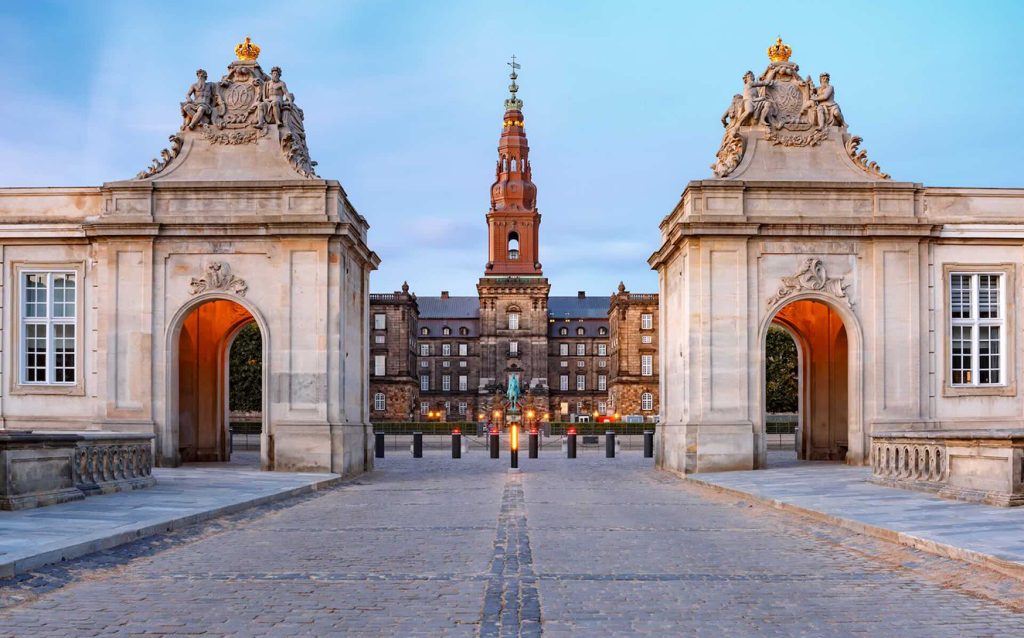
The Royal Reception Rooms
The Royal Reception Rooms are among the most impressive areas of Christiansborg Palace, used by the Danish monarch for official functions. These rooms are adorned with magnificent tapestries, intricate woodwork, and elaborate frescoes that depict scenes from Denmark’s history. The grandeur of these rooms is almost overwhelming, with each detail meticulously crafted to showcase the wealth and power of the Danish Crown.
One of the most famous features of the Royal Reception Rooms is the Queen’s Tapestries. These tapestries, commissioned in 1990 to mark the 50th birthday of Queen Margrethe II, depict 1,000 years of Danish history in a vibrant and imaginative style. Walking along these tapestries is like taking a visual journey through Denmark’s past, from Viking conquests to the modern-day monarchy.
The Great Hall and the Prime Minister’s Office
As you continue your exploration, you’ll come across the Great Hall, which serves as the centerpiece of the palace. This vast, imposing space is used for state dinners and other major events, and its scale alone is a reminder of the palace’s role as the heart of Danish political life. The high ceilings, lined with grand arches and adorned with regal paintings, amplify the sense of grandeur that permeates the palace.
Interestingly, Christiansborg Palace also houses the office of Denmark’s Prime Minister, making it one of the few places in the world where the legislative, executive, and judicial branches of government are located in the same building. This unique arrangement symbolizes the continuity and unity of the Danish state, reflecting its long-standing traditions of governance and justice.
The Tower: A Panoramic View of Copenhagen
No visit to Christiansborg Palace is complete without ascending the palace tower. Standing at 106 meters, it is the tallest tower in Copenhagen, offering unparalleled views of the city. The tower provides a sweeping panorama of Copenhagen’s skyline, from the spires of ancient churches to the modern architecture that punctuates the cityscape.
As you gaze out from the tower, the juxtaposition of old and new becomes clear. You can see the historical buildings that define Copenhagen’s character alongside the contemporary structures that signal its future. This view encapsulates the essence of Christiansborg itself—a place where history and modernity coexist in harmony.
The Palace Chapel and Ruins
Christiansborg Palace is also home to a beautiful chapel that has served as the site for many royal weddings and funerals. The chapel’s neoclassical design, with its simple yet elegant interior, offers a tranquil space for reflection amidst the grandeur of the palace. The white marble columns and soft natural light that filters through the windows create an atmosphere of peace and solemnity, contrasting with the opulence of the rest of the palace.
Beneath the palace lies another hidden treasure—the ruins of the original medieval fortress. These ancient foundations date back to the 12th century and offer a fascinating glimpse into the early history of Copenhagen. Walking through these ruins, you can almost feel the echoes of the past, imagining the lives of those who once defended the fortress and walked its halls.
Christiansborg Palace as a Symbol of Denmark’s Evolution
Christiansborg Palace is not just a historical monument; it is a living symbol of Denmark’s evolution. From its origins as a royal fortress to its current role as the seat of the Danish Parliament, the Supreme Court, and the Prime Minister’s Office, the palace represents the journey of the Danish state through centuries of change. It is a place where tradition and progress meet, where the past informs the present, and where the future is shaped.
For anyone interested in the rich history of Denmark, a visit to Christiansborg Palace is an absolute must. It is a place that offers not just a glimpse into the past, but also a deeper understanding of the values and institutions that have shaped modern Denmark. Whether you are exploring its grand halls, admiring the art and architecture, or simply taking in the views from its tower, Christiansborg Palace leaves a lasting impression—a testament to the enduring legacy of Danish history and culture.
7. Rosenborg Castle: A Fairy Tale Fortress with Royal Treasures
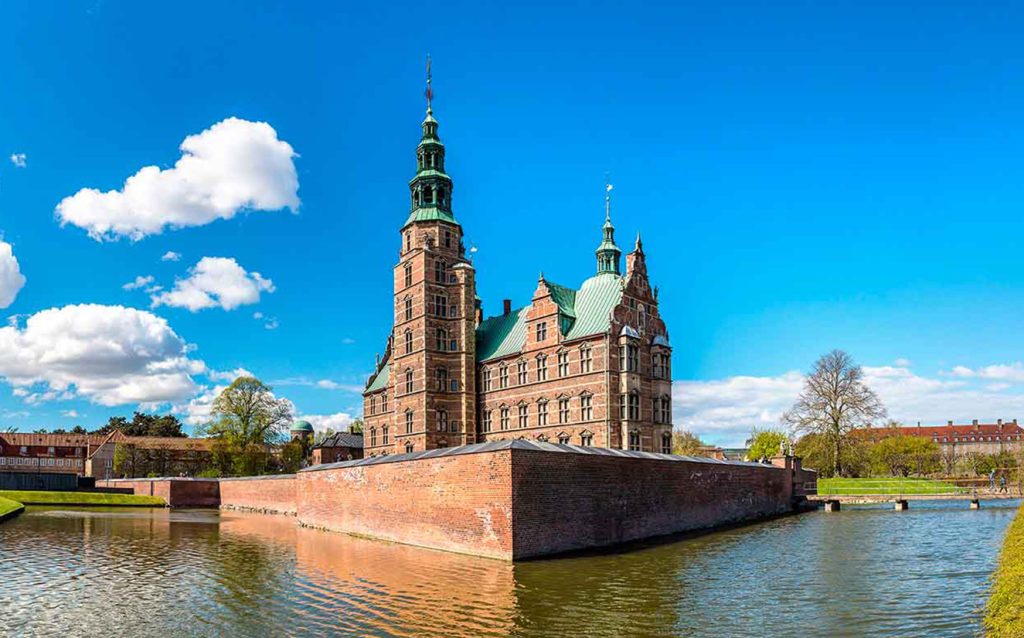
For those fascinated by royalty, Rosenborg Castle is a treasure trove waiting to be discovered. Built in the 17th century as a royal summer residence, this Renaissance-style castle now houses some of the Danish crown’s most precious jewels.
Rosenborg Castle is like something out of a fairy tale, surrounded by lush gardens that invite you to wander and dream. Inside, the castle is filled with royal artifacts, from the dazzling crowns to intricate tapestries. Each piece is a testament to Denmark’s rich royal heritage, offering a glimpse into the lives of its monarchs. Walking through the castle’s halls, I felt a deep connection to the history that shaped not just Denmark, but much of Europe.
Copenhagen is a city where the past and present dance together in a beautiful symphony, each note revealing a new layer of charm and history. From ancient fortresses to vibrant markets, from fairy tale sculptures to royal palaces, every corner of Copenhagen tells a story that captures the heart.
Every step I took in Copenhagen felt like walking through a living, breathing storybook. The city’s warmth and vibrancy are infectious, leaving a lasting impression on anyone fortunate enough to visit. Whether you’re a history buff, an art lover, or a foodie, Copenhagen offers an experience that’s as enriching as it is unforgettable.
So, if you’ve never been to Copenhagen, I urge you to add it to your travel list. And if you’ve been before, trust me—you’ll find yourself longing to return, eager to discover even more of what this enchanting city has to offer.
